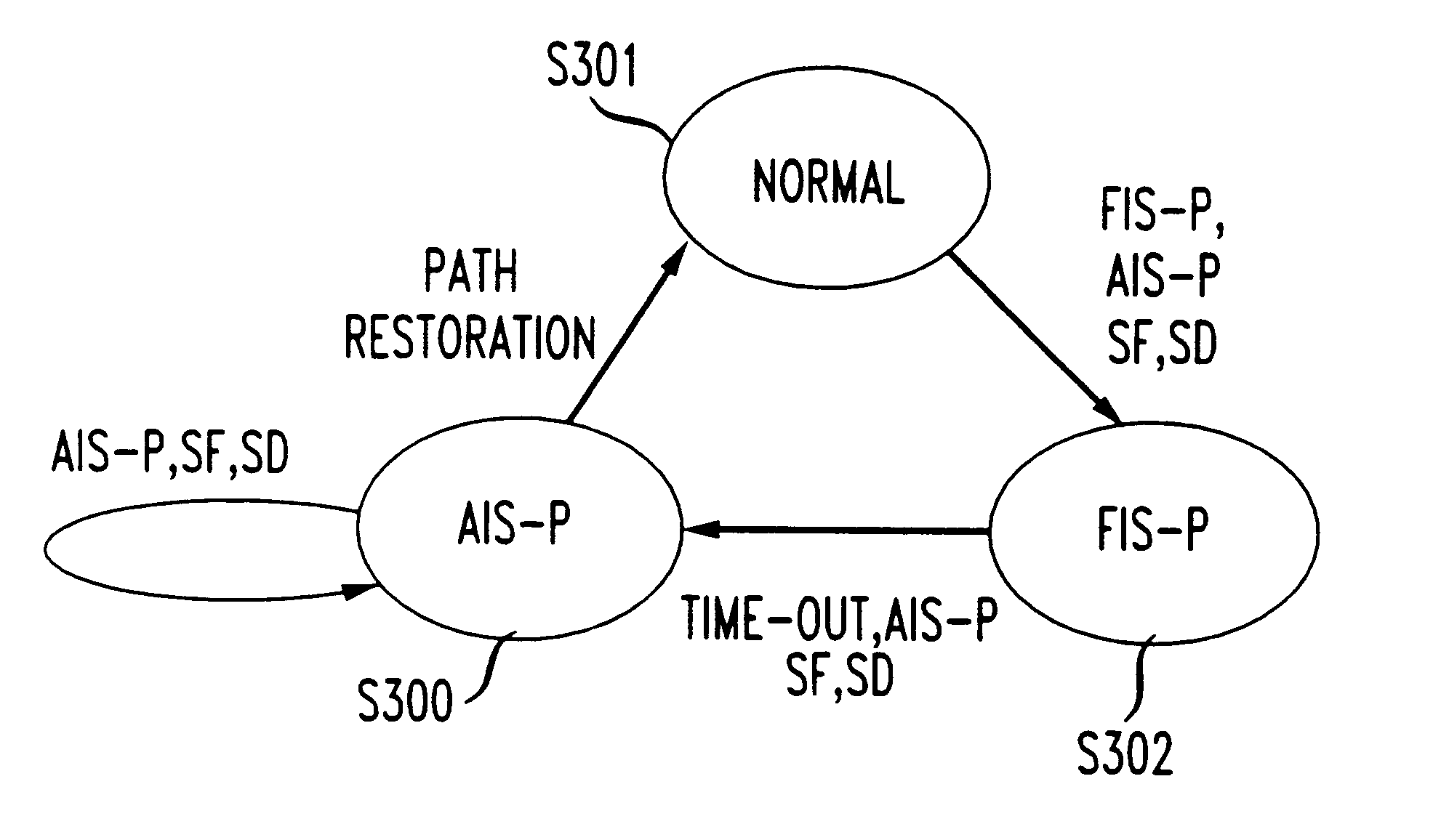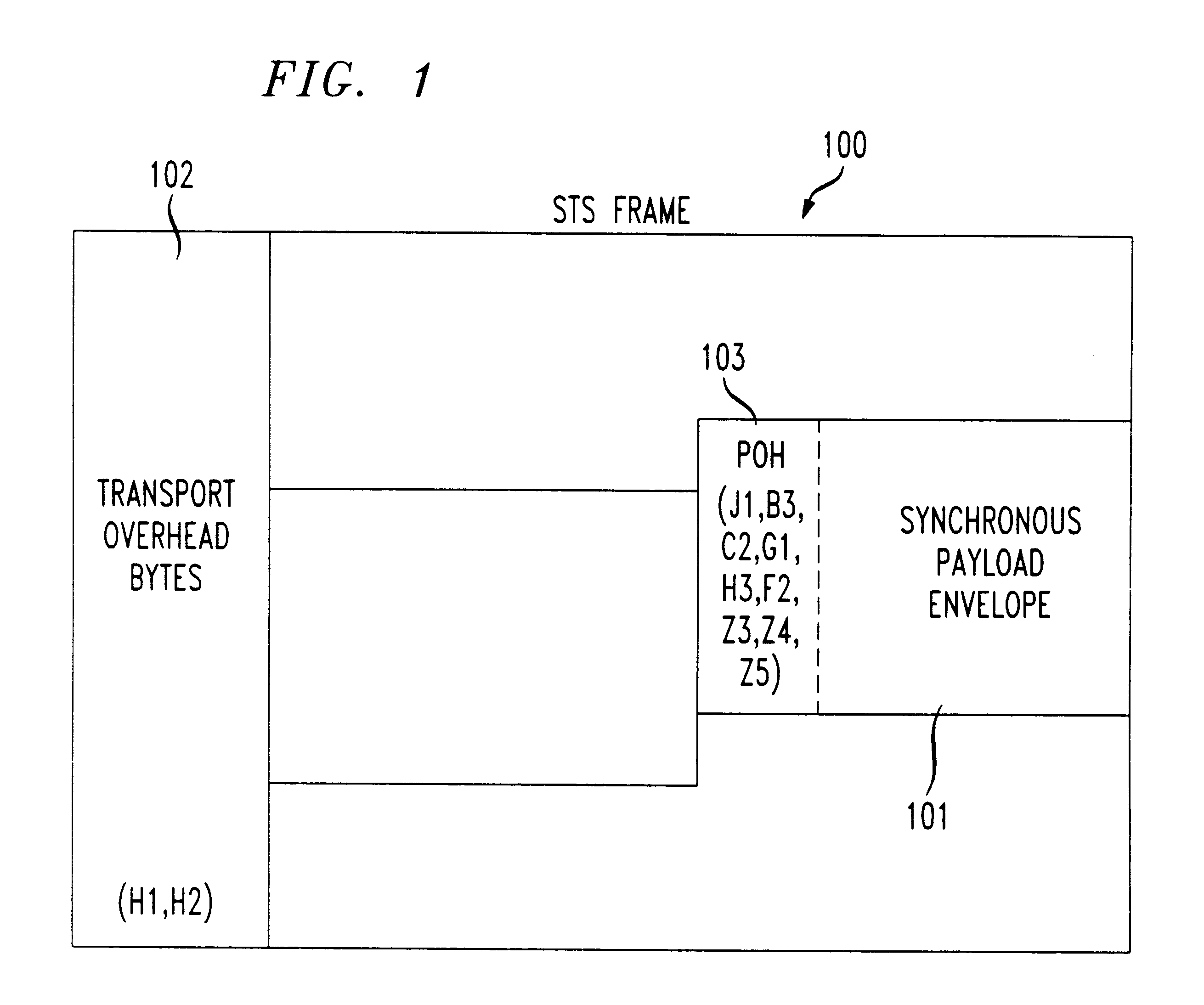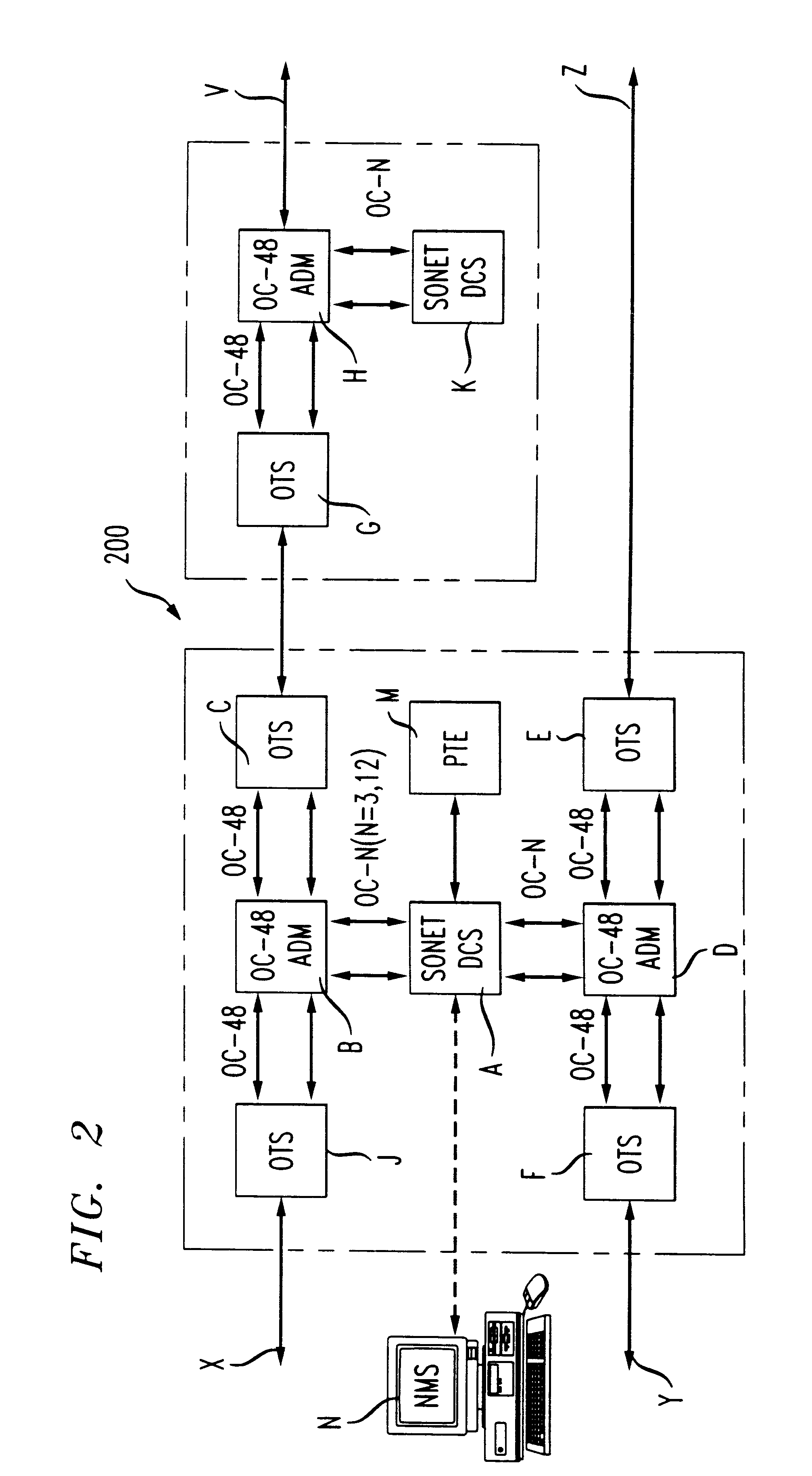Fault detection and isolation in a synchronous optical network (SONET) and in a synchronous digital hierarchy (SDH) network
a technology of synchronous optical network and fault isolation, applied in data switching networks, instruments, frequency-division multiplexes, etc., can solve the problems of time-consuming and expensive method of fault isolation and dissemination of information to nes for the purpose of signal restoration, and nes do not retain any information about the fault location, etc., to reduce the effect of eliminating any difference in the behavior of ptes
- Summary
- Abstract
- Description
- Claims
- Application Information
AI Technical Summary
Benefits of technology
Problems solved by technology
Method used
Image
Examples
Embodiment Construction
In some embodiments of the present invention, a DCS may insert an FIS-P when it detects a fault (if it is closest to the fault) and / or receives: an AIS-P on a SONET / SDH is path. All other DCSs downstream on the SONET / SDH path may thus receive the FIS-P and / or may pass the FIS-P through. After a predetermined time-out period (e.g., between 1 and 5 milliseconds, between 5 and 10 milliseconds, or between 10 and 20 milliseconds), the DCS closest to the fault location may stop sending the FIS-P and may begin to send an AIS-P on the downstream path. The downstream DCSs may recognize the change of the signal from an FIS-P to an AIS-P and may pass the AIS-P through.
According to some embodiments of the present invention, whether a downstream DCS inserts an FIS-P upon receiving an AIS-P from an upstream NE may depend upon whether the state of the SONET / SDH path changes from a normal state to an AIS-P or from an FIS-P to an AIS-P. Accordingly, the downstream DCSs may be configured such that th...
PUM
 Login to View More
Login to View More Abstract
Description
Claims
Application Information
 Login to View More
Login to View More - R&D
- Intellectual Property
- Life Sciences
- Materials
- Tech Scout
- Unparalleled Data Quality
- Higher Quality Content
- 60% Fewer Hallucinations
Browse by: Latest US Patents, China's latest patents, Technical Efficacy Thesaurus, Application Domain, Technology Topic, Popular Technical Reports.
© 2025 PatSnap. All rights reserved.Legal|Privacy policy|Modern Slavery Act Transparency Statement|Sitemap|About US| Contact US: help@patsnap.com



